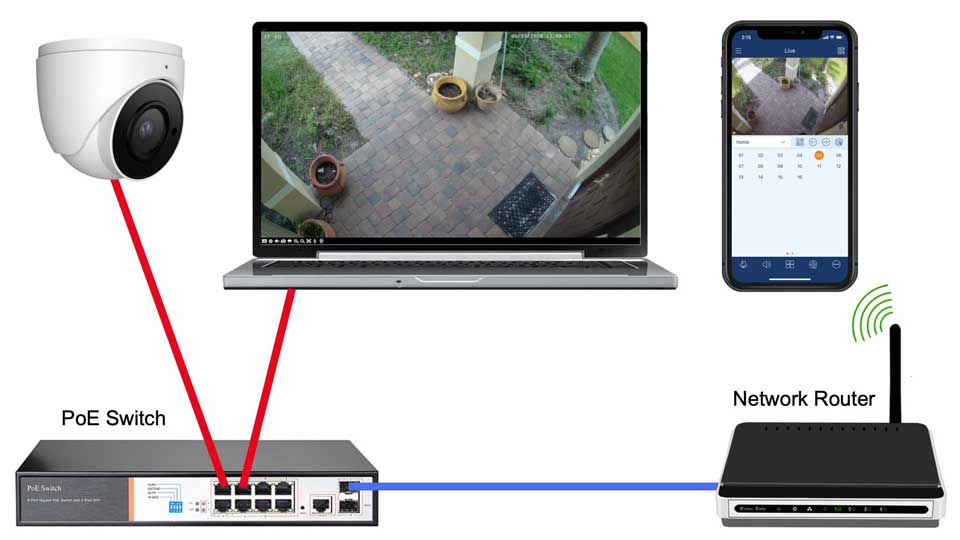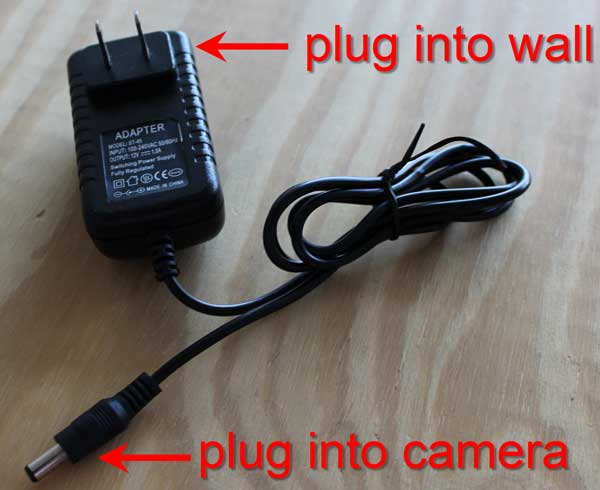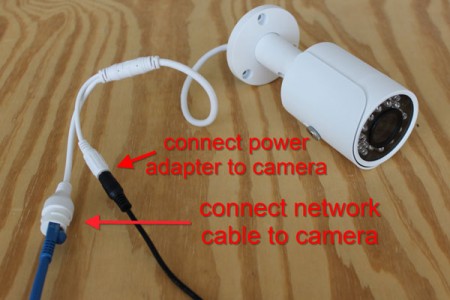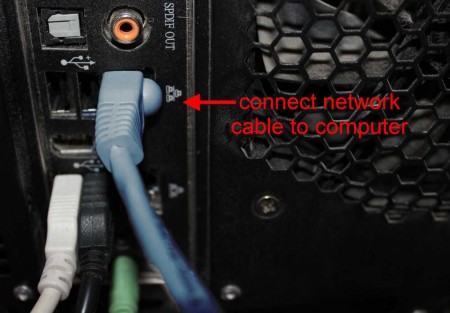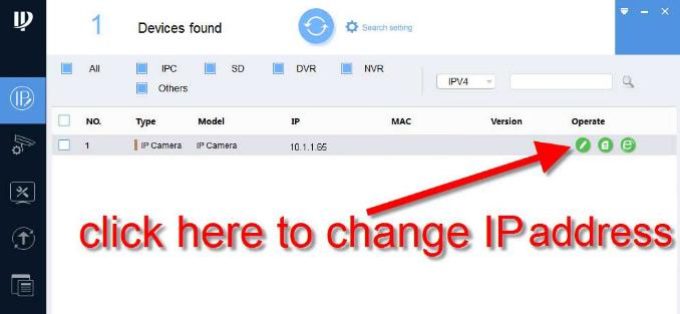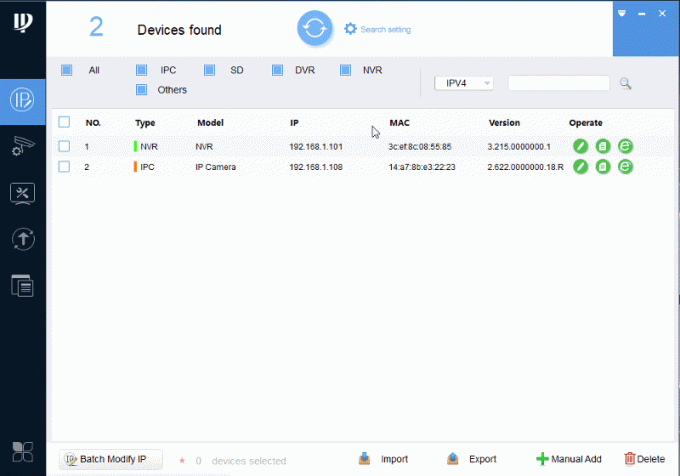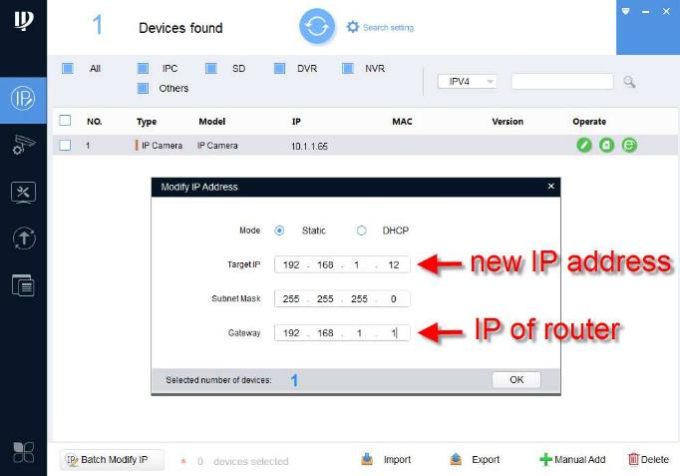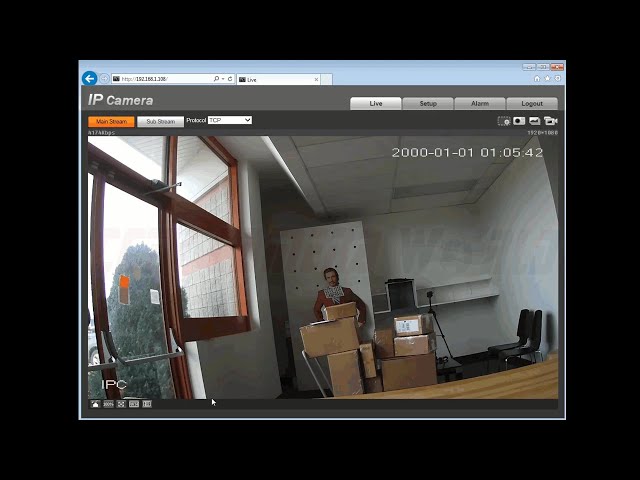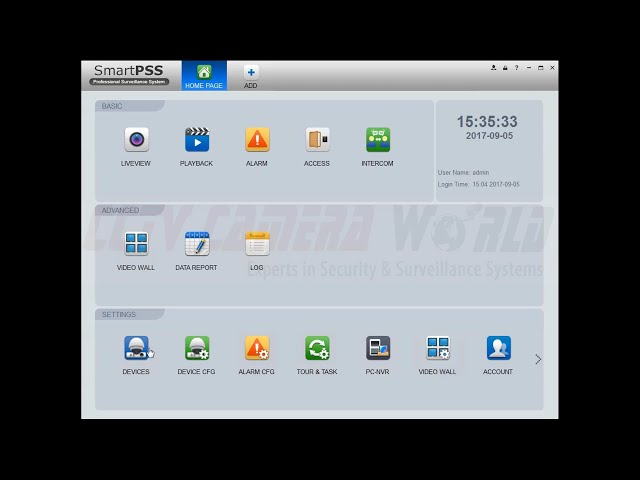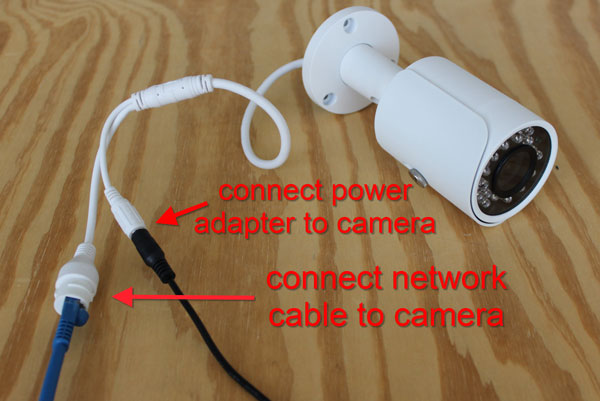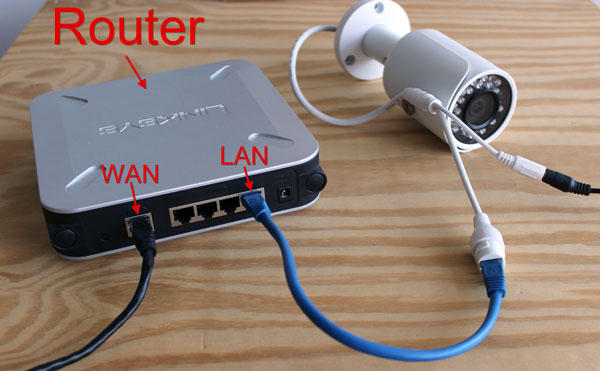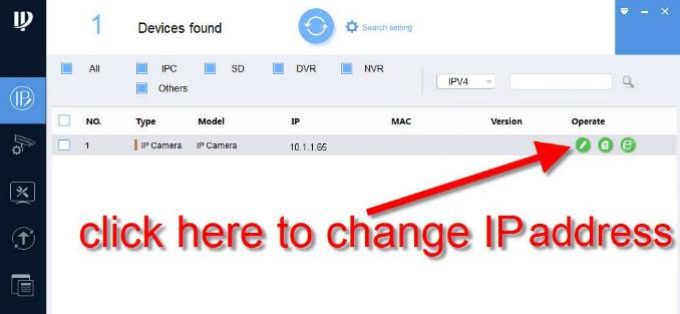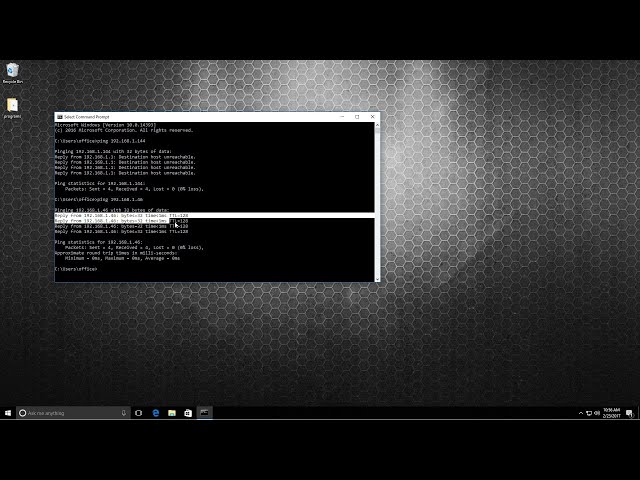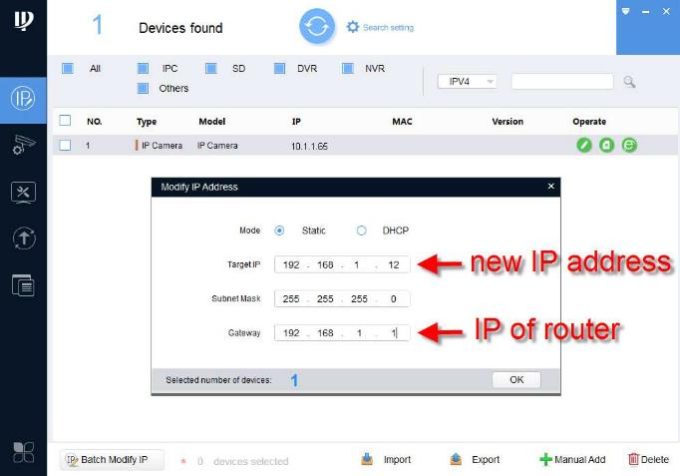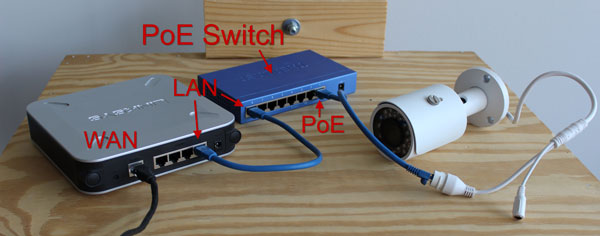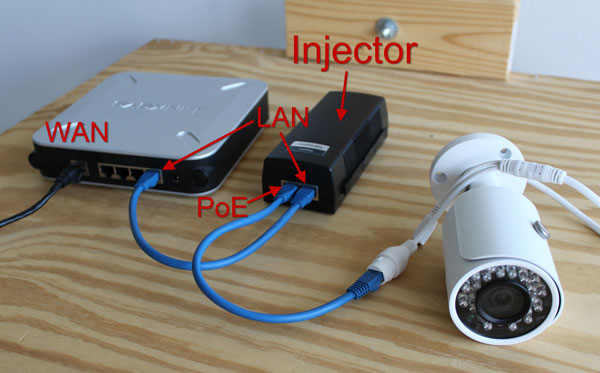Views: 4
How to Connect IP Camera to Computer, Many consumers find the need for a professional IP based security camera system for their home, business, or property, but are under the assumption that IP systems are complicated and too tech-heavy. This discourages them from purchasing one, preventing them the security they require. The truth is, though, that setting up an IP camera is easier than you think. It involves a basic understanding of networking, and by following some simple steps, you’ll have your IP cameras functioning in no time.
Our IP camera can connect directly to your network or computer, and there are three ways to do so. The three ways listed below do not require a NVR. A NVR, or Network Video Recorder, is the device that IP cameras connect to. The NVR records video provided by the IP cameras to a hard drive, either in HD (720p, 1080p), 2K HD, or Ultra HD (4K) depending on the type of NVR and type of camera that’s being used with it.
IP cameras are network-based cameras, however they don’t require Internet access in order to be used as they are standalone devices that can be used on a local network. A simple local network can be either of the following:
Only if you want to view your system remotely from the internet then you would have to connect the system to the Internet.
Do I need a NVR for my IP security camera system?
A NVR is not necessary in order to view your network cameras or even record video. If you are testing cameras, looking for a temporary setup or want to set up something inexpensive then using a computer with an IP camera is a good alternative to a NVR. SmartPSS is our computer software program that allows PCs to view and record IP cameras. However, this kind of processing will demand a lot from the computer. Most likely, you wouldn’t be able to use that computer for personal use as it would be bogged down processing video from high resolution IP network cameras. Also, computers can be unreliable and crash, potentially leaving you with no recorded video.
NVR products are standalone devices using a Linux operating system which is known to be rock-solid and crash free, and designed to be operate 24/7 and maintain system security with user account access permissions. For a complete security camera system, you will want to use a NVR along with cameras. SmartPSS software can be used as a client software to connect from a computer to a NVR to watch cameras connected to the NVR and to playback/download recorded security footage.
Three ways to connect an IP camera to a computer
Before we begin, it is important to understand that network camera systems require the ability to transport video and power to work correctly. Power Over Ethernet (PoE) is a technology that transmits video/data signal and power over one Ethernet cable. In situations where PoE isn’t available, a 12V DC power adapter will be necessary to supply power to the camera.
Secondly, you will need to use our IP finder Config Tool to find cameras on your network. For more info on basic networking knowledge as to how IP addresses matter when deploying network cameras, please read our guide about connecting security cameras to the internet.
Now, let’s discuss the three ways to to connect to an IP camera from your computer.
How to Connect IP Camera to Computer
1) 12V DC power adapter with a network cable straight into a PC
a) For this method we will provide power to the camera using a 12V DC 1amp power adapter that plugs into a 110V AC outlet. Below is a picture of our trusty power adapter.
b) Next, connect a network cable from the camera to your computer.
c) Set your computer’s network port to a static IP address like 192.168.1.200 so you can talk to the camera. Here’s how you do it on a Windows Computer:

d) All newer cameras with firmware from 2018 and onward have stringent password rules that require initialization before making any configuration changes to the camera including the IP address. In order to set the password and password recovery email address you must login to the web interface of the camera. Be sure to note down and keep the credentials you are setting in a safe place that you will remember.
There are no master reset passwords for our equipment. If you forget your password, recovery email address, and security questions that you set on the camera at time of initialization, resetting the camera requires factory service which will incur out-of-warranty costs to reflash the camera.

e) Once you have a static IP address assigned to your computer’s wired network port, turn off WiFi on your computer. You can find the camera’s current IP address by using the Config Tool as shown. Our test camera has a current IP address of 10.1.1.65. If you need to change the IP address to let’s say 192.168.1.120, you can do that by clicking on the pencil icon to edit.
Note: if you have a password other than admin set on the cameras, then you will need to enter that in the “search settings” options before attempting to edit the IP address. See the illustration below on how that is done.
f) As explained in our article connecting security cameras to the internet, for two devices on a network to talk to each other, they must have the same IP address scheme. In 1C we set our computer’s address to 192.168.1.200, so we need to set change this camera’s address to 192.168.1.X where X is a number between 2 and 254, and not same as the our computer’s current address. We picked 12, so below is a screenshot of what to set your camera’s ip address to if you are following along in our guide. Set the subnet to 255.255.255.0 and gateway to 192.168.1.1.
g) After changing your camera’s IP address to one that matches your network, type the new IP address of your camera into the URL of internet explorer. Here’s a brief example:
You can also view the camera using our PC software. If you don’t already have it, you can download SmartPSS from here. Here’s how if you already have SmartPSS installed.
In summary, the above is a quick and easy way to connect an IP camera to a computer with a hardwired network port. This is great for the following scenarios:
Most computers have only one network port, so this method can be problematic as it would use up your only network port, preventing you from having a hard-wired Internet connection. The next 2 methods will demonstrate how to set up a network camera on a network. Method 2 is for setting up a camera with a 12V DC power supply and Method 3 entails using a PoE injector or switch. The only different between these two methods is how power is supplied to the camera.
2) 12V DC power to camera + network cable to router
This method will show you how to connect an IP camera to your router and view it over a network, while supplying power to the camera using a 12V DC power adaptor.
a) Connect a 12V DC power supply to your camera and connect the power adaptor to the wall to power the camera.
b) Connect a network (Ethernet) cable from the camera to the router to establish a data connection between the camera and the router.
c) Give the camera about 2-3 minutes to boot. Use our IP Finder Config Tool to find the camera on your local area network (LAN). Below is a screen shot of how it looks in our case.
The camera currently has an IP address of 10.1.1.65. As explained in our article connecting security cameras to the internet, for the camera to be reachable from the computer on your network, its IP address has to match the IP scheme of your network. In our case our router IP is 192.168.1.1, so we are going to have to change the IP address of the camera. To change the IP simple press the pencil icon to edit.
d) We are going to set the camera to an IP of 192.168.1.X, we chose 192.168.1.12. Before we go ahead and change the IP address, we have to think about duplicate IP addresses on the network which would create networking issues. To see if a specific IP address is available on your LAN, use the command prompt in Windows to ping the address you intend to use. Below is a video explaining how to use the ping command. You can use this command on Mac as well by using the terminal.
e) Let’s change the IP address. In our case we set it to 192.168.1.12. Subnet mask is usually 255.255.255.0 on simple networks, and the gateway is the IP address of the router. Press OK.
f) Once the camera is assigned a new IP address, you can access the camera using your Web Browser or SmartPSS as shown in 1F above.
3) Camera to PoE Switch or PoE Injector
We discussed that PoE supplies power to the camera, so a 12V power adapter is not necessary in this scenario.
In this method you plug an ethernet cable from the camera to a PoE port on a compatible PoE switch or injector. The PoE switch or injector connects to the router.
Here’s how you connect to a PoE switch.
Here’s how you connect to a PoE injector
Again, use the Config Tool to find your camera’s IP address and change it to match your network scheme (if necessary) as described in steps 2C thru 2E. Once the camera is on the same network as your computer you can login and watch the camera as shown in Step 1F.
Summary
At this point, you now should know a good amount about networking and have used the above mentioned steps to make your very own IP camera system using your computer and IP camera.
Viewing an IP Camera on a Smart TV
Among the many different ways that security cameras are used, we are often asked if it is possible to view an IP camera directly on a Smart TV without using a NVR recorder. With most Smart TVs on the market there is no application that is available to watch IP cameras directly on the TV. In this guide we show how to use an Android TV box by downloading an App to connect an IP camera to a Smart TV or any monitor that has an HDMI input.
All IP cameras from CCTV Camera World support a RTSP video stream that is usable by third party programs and apps. The App that we suggest you use on an Android TV box is called VLC Media Player. You can login and access the RTSP stream from an IP camera and have it display on a TV.
Keep in mind any device that can download VLC Media Player can do this process like iPhones, iPads, Android tablets, and phones.
What equipment is needed?
Here’s the list of all the equipment that is needed to connect an IP camera to a Smart TV.
How to connect IP security cameras to an Android TV Box
Before you can access the stream from the camera you will need to have it connected to your computer network and verify that it’s accessible. If you purchased a standalone IP camera from CCTV Camera World the camera is likely already configured with an IP address. Check the top of the camera box for the login information label. If the camera has not been configured, or you need to set it up on your network we recommend following our How to Connect an IP Camera guide.
You will also need to set up your Android TV box on your network, consult with the manufacturer of your box to find out how to do this.
You will need your IP address, username, and password that is set on the camera in order to access it. Inside of the VLC Media Player app you can access network streams. Inside of the app navigate to adding a video source and select network stream. Using the example RTSP stream below plug in the information for your camera’s IP address and type the text into the media player URL.
rtsp://192.168.1.109:554/cam/realmonitor?channel=1&subtype=0
After you’ve typed in the correct RTSP stream for your camera you will be required to login to your camera stream. Type in the username and password for your camera to allow the app to login to your camera stream.
If you receive an error, double check that your camera is connected to the network and you’ve typed the correct username and password. Provided the camera is set up on the network and you are able to login you should now see your camera stream inside of the VLC Media Player App.
Keep in mind that Smart Camera features cannot be used with the RTSP stream. If you would like to use Smart Detection features that your security camera may have, you will want to use an NVR to display the camera on your TV.
Watch our video below that shows the setup process described above on an Android TV box.

